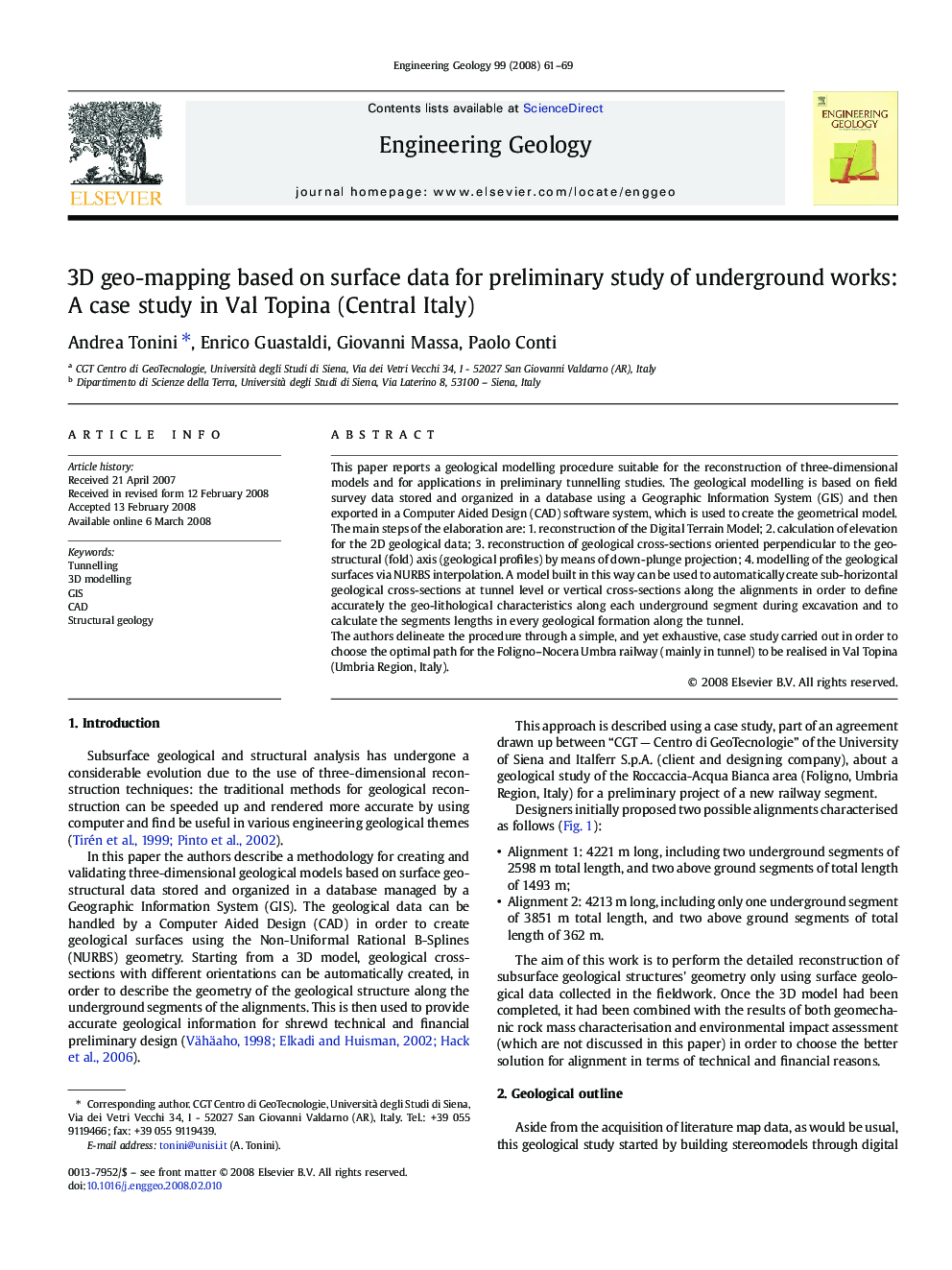| Article ID | Journal | Published Year | Pages | File Type |
|---|---|---|---|---|
| 4744884 | Engineering Geology | 2008 | 9 Pages |
This paper reports a geological modelling procedure suitable for the reconstruction of three-dimensional models and for applications in preliminary tunnelling studies. The geological modelling is based on field survey data stored and organized in a database using a Geographic Information System (GIS) and then exported in a Computer Aided Design (CAD) software system, which is used to create the geometrical model. The main steps of the elaboration are: 1. reconstruction of the Digital Terrain Model; 2. calculation of elevation for the 2D geological data; 3. reconstruction of geological cross-sections oriented perpendicular to the geo-structural (fold) axis (geological profiles) by means of down-plunge projection; 4. modelling of the geological surfaces via NURBS interpolation. A model built in this way can be used to automatically create sub-horizontal geological cross-sections at tunnel level or vertical cross-sections along the alignments in order to define accurately the geo-lithological characteristics along each underground segment during excavation and to calculate the segments lengths in every geological formation along the tunnel.The authors delineate the procedure through a simple, and yet exhaustive, case study carried out in order to choose the optimal path for the Foligno–Nocera Umbra railway (mainly in tunnel) to be realised in Val Topina (Umbria Region, Italy).
